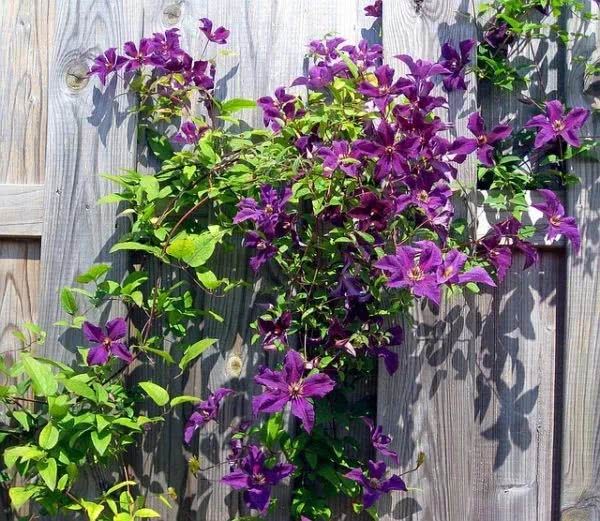Friends in the north plant climbing vines on the outdoor balcony. Clematis are fine at minus 20 degrees in winter.

There are many northern friends do not know what climbing rattan flowers are planted in the outdoor balcony and yard, clematis is a good choice, it has some very hardy varieties, it does not matter to be raised outdoors in winter. It is easy to grow and has different colors. You can plant it in a flowerpot, set up a support or let it grow on a fence.
You can match different clematis varieties, most of them bloom from early spring to late autumn, and some of them bloom in winter. It is known as the queen of rattan flowers, but it is not a false name. Its flowers are very brilliant, rich in colors, and some with charming fragrance.
The key to the cultivation of clematis is the soil, which does not like acidic soil or neutral soil. It should be cultivated with weakly alkaline, fertile, loose and well-drained soil. The soil should not only be alkaline, but also maintain good drainage to avoid stagnant water in the soil. Otherwise, it is easy to rot roots and stems.
Beginners can cultivate varieties that are easy to grow, such as the common Jackman II, General Scott, Henry, Arabella, Arctic Queen and Andrmeida.
Before planting, you need to know what kind of environment this variety of clematis likes, whether it is a variety of early or late flowers, and whether the flowers are single or double.
Clematis should be cultivated in a place high enough for it to cling to and grow. There are about three-meter-high brackets for it to climb, preferably in a sunny patio or yard.
Clematis takes several years from seedling cultivation to flowering and maturation, so you must be patient in the process of maintenance. when you buy clematis, you'd better buy seedlings that are more than two years old, and choose some varieties with strong growth.
The best place to plant clematis is to have more light every day. Only a few clematis can blossom in the semi-shade, such as the common Henry. Most clematis varieties need more than six hours of direct light every day.
Clematis like fertile, loose and well-drained soil. If your soil is acidic, you should regularly add limestone or some plant ash to improve the pH of the soil and make it suitable for clematis to grow.
Another key point for clematis conservation is to keep its roots cool and semi-shaded, to avoid exposure or long-term direct sunlight, and its branches and leaves need more light to blossom.
Clematis can not grow upward on the wall, it needs to cling to some thinner sticks or brackets in order to winding upward growth, it is best to build some grid-like brackets.
- Prev

Planting these ornamental onions in the yard is more beautiful than tulips and hyacinths.
You may not believe it, there are many ornamental varieties of onions, and it is a good choice to plant them in the courtyard. Ornamental onions belong to the bulb flowers of the genus Allium of Liliaceae. The flowers are very small, but there are a lot of flowers, gathered into a ball, there are very.
- Next

How to raise orchids to turn the pot correctly in autumn is the key, which is related to the flowering in the coming year.
Autumn has come, and in this season, it is also related to the flowering of flowers in the coming year, so it certainly requires us to turn the pot correctly, and many flower friends say that it is too difficult to turn the pot for the orchid.
Related
- Wuhan Hospital Iron Tree Blooming Result Was Instantly Frightened by the Gardener Master
- Which variety of camellia is the most fragrant and best? Which one do you like best?
- What is the small blue coat, the breeding methods and matters needing attention of the succulent plant
- Dormancy time and maintenance management of succulent plants during dormancy
- Minas succulent how to raise, Minas succulent plant pictures
- What are the varieties of winter succulent plants
- How to raise succulent plants in twelve rolls? let's take a look at some experience of breeding twelve rolls.
- Attention should be paid to water control for succulent plants during dormant period (winter and summer)
- Watering experience of twelve rolls of succulent plants
- Techniques for fertilizing succulent plants. An article will let you know how to fertilize succulent plants.

